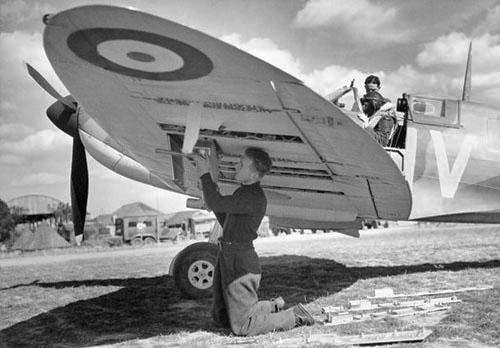The Yesterday channel’s ongoing “Spirit of 1940” season has provoked a giant surge in its viewing figures, another reminder of the grip World War Two still exerts on large chunks of the British public. The Battle of Britain in particular has become a self-contained historical moment emblematic of what the British regard, or at least used to regard, as their finest characteristics – patience, courage, stoicism and a dogged refusal to accept bullying European dictatorships. Maybe we haven’t quite let go of that last part. Perhaps the story of our Boys in Blue in the late summer of 1940 gains additional resonance from the way it contrasts so starkly with the meandering aimlessness of Britain’s recent military adventures. It was a battle with a purpose, won by the Brits without any help from the Americans.
 The picture that emerged chimed remarkably closely with the surviving myths about the course of the battle. Local Kentish residents did indeed stand in the roads and fields gazing up at the dogfighting ballet thousands of feet overhead, and one recalled how from the ground machine gun fire sounded “like cloth ripping”. It seems extraordinary that the RAF squadrons were fighting a "nine-to-five" war, taking off to repel the Luftwaffe during the day, then nipping down the pub to hoist a few after darkness fell and the enemy raids ceased, but that’s the way it was.
The picture that emerged chimed remarkably closely with the surviving myths about the course of the battle. Local Kentish residents did indeed stand in the roads and fields gazing up at the dogfighting ballet thousands of feet overhead, and one recalled how from the ground machine gun fire sounded “like cloth ripping”. It seems extraordinary that the RAF squadrons were fighting a "nine-to-five" war, taking off to repel the Luftwaffe during the day, then nipping down the pub to hoist a few after darkness fell and the enemy raids ceased, but that’s the way it was. Although Biggin Hill was smack in the middle of what became known as Hell’s Corner, an area of south-east England under continuous German air attack, there was still a glimmer of sympathy for the enemy. Geoff Greensmith, then aged six, remembered meeting a wounded German pilot who’d landed by parachute in his garden. He produced some photographs of his two childen, and burst into tears. “He was just like us, and like a kid he could cry,” Greensmith concluded.
Although Biggin Hill was smack in the middle of what became known as Hell’s Corner, an area of south-east England under continuous German air attack, there was still a glimmer of sympathy for the enemy. Geoff Greensmith, then aged six, remembered meeting a wounded German pilot who’d landed by parachute in his garden. He produced some photographs of his two childen, and burst into tears. “He was just like us, and like a kid he could cry,” Greensmith concluded.














Add comment